
Assisted braking belay devices typically offer a range of mechanisms and geometry to help you catch a leader fall and reduce the chances of accidents caused by inattentive belaying. However on first acquaintance they often leave the new user scratching their head wondering how to correctly operate the device. The Jul 2 is slightly different. In essence it is an assisted braking device (note: not an auto-locking one!), but one that operates with the familiar feel of a conventional belay device and with no moving parts. As a result, anyone can pick it up and get using it quickly - even beginners.
The first thing that I noticed is that for its size the Jul 2 feels relatively heavy in the hand - not the biggest issue, as this belay device is best suited to being battered about down the indoor wall or at a sport crag. For other applications, trad climbing for instance, it is arguably a bit bulky, and of limited use anyway since it only takes one rope (for trad you'd want the Mega Jul - see our review - or the Micro Jul). The majority of the Jul 2's 87g weight comes from the wear resistant steel from which the body is made.
Feeding out rope
The device feeds out rope like many others of its type. When paying out, all that is required is a gentle lift of the Jul 2 away from the carabiner to stop the assisted braking from engaging. This works well as the thumb on the braking hand naturally finds itself sitting in the thumb space to allow this action to happen. Luckily, not once have I experienced that embarrassing moment of fumbling trying to release the lock and inevitably apologising for my poor belaying skills. It pays out smoothly even with thicker ropes (the range is 8.9 –11.0mm).
Lowering
Lowering is arguably the Jul 2's weakest attribute as it's something that has a bit of a knack to it. It is a two-handed action, with the thumb of one hand lifting the catch while you control the dead rope with the other hand. There is a sweet spot between too jerky and too fast that gives the best lowering pace and the smoothest descent for your partner - but finding this takes some practise. For the first few times using the device this will require a little bit of extra concentration until they are safely on the ground.
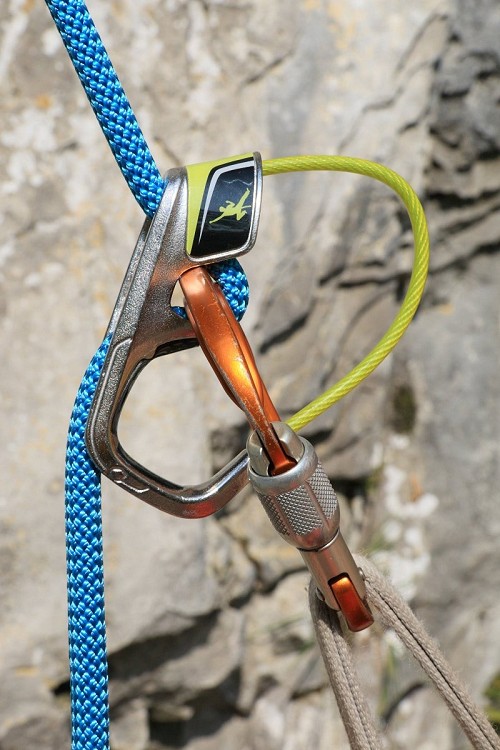
As an example, on the first route I belayed with the Jul 2 I lowered my partner much faster than expected while distracted trying to find the lowering sweet spot. This resulted in him hitting the ground much too fast from about 4 metres up. Although it's fair to say that my braking hand must not have been tight enough on the dead end of the rope and therefore that I wasn't using the device correctly, I think this does emphasise that the Jul 2 is not foolproof. As with any belay device that does not have a hands-off failsafe lock, it is possible for the rope to feed through at a fast rate if you let it. This is an especially important point for the first time user while they are still getting to grips with lowering smoothly. Just remember: this is an assisted braking device, not an auto-locking one!
We asked Edelrid for a comment:
'I have not come across this issue before and can only think the device was held open without the tail end of the rope been held firmly' said Paul Craven. 'The Jul2 is an assisted breaking device; it is important for the free rope end to be held at all times, especially when opening the device for lowering.'
Catching a fall
Catching a fall is nice and forgiving. The braking doesn't snap on instantly, but rather a small amount of rope slides through the device before slowing into your catch. This soft brake might be particularly good for a belayer with little experience, but really in most sport climbing situations anyone is going to feel the benefit. Do note however that the device never automatically fully locks, so as with any standard belay device a controlling hand should be firmly on the braking end of the rope at all times.
Summary
With its soft catch, the Jul 2 is a really nice forgiving indoor and sport climbing belay device that can be used on a wide range of rope diameters, from 8.9-11mm. For less experienced belayers it has an advantage over some of the more complex assisted braking devices with moving parts in that the key action, holding a fall, is basically the same as with standard belay devices, only with the added safety benefit of the assisted braking. There is a flipside to this however, which would be of particular disadvantage to less experienced belayers - that lowering action, which takes practise to get smooth. Lastly, there's the very fair price: I think you'd struggle to find an assisted braking belay device for less than £25.
Edelrid say:
Innovative belay device with high braking performance for single ropes. The optimised Mega Jul geometry ensures easy and secure belaying even with thicker ropes.
- Tough core material of abrasion-resistant stainless steel
- Optimised geometry ensures easy operation even for beginners
- High braking performance assists the belayer with leader falls
- Rope can be paid out faster to a leader by holding the device in the "open" position with the thumb
- Perfect handling, even for ropes with larger diameter
- Suitable for 8.9 –11.0 mm single ropes
- Weight: 87g
For more info see edelrid.de



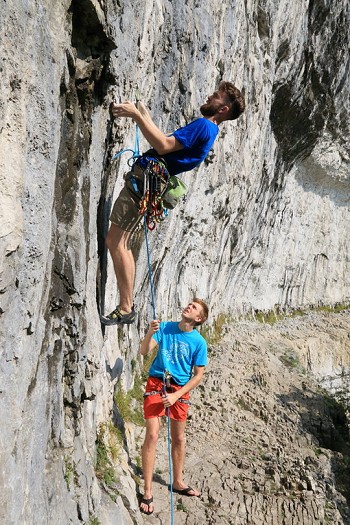

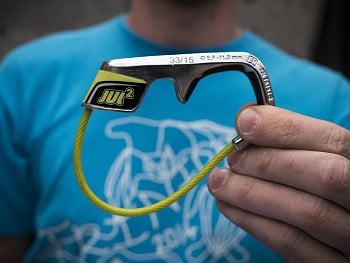

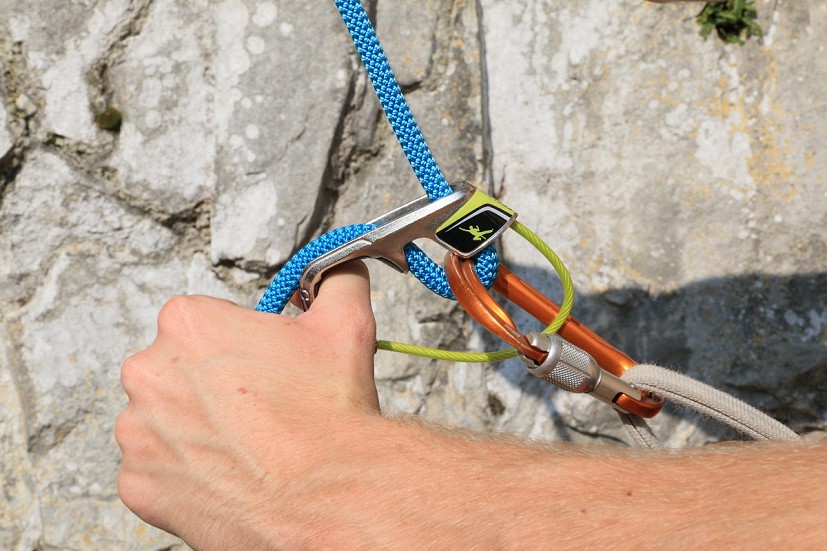
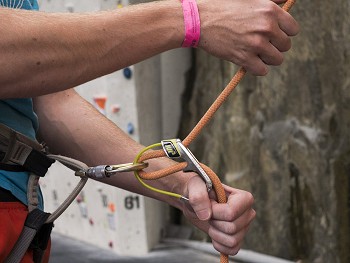
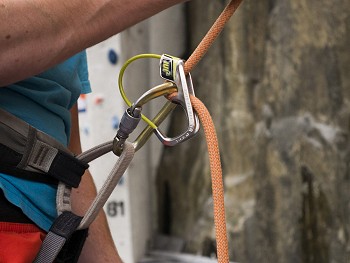
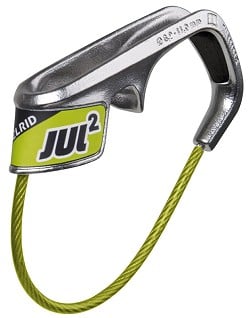
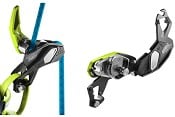
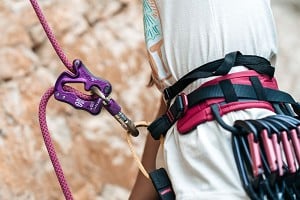
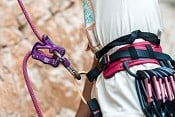
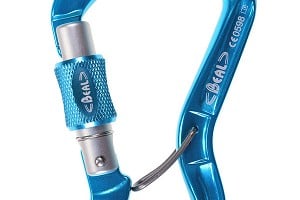
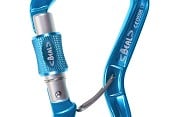
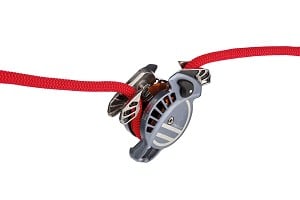
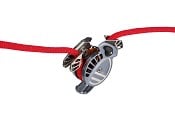
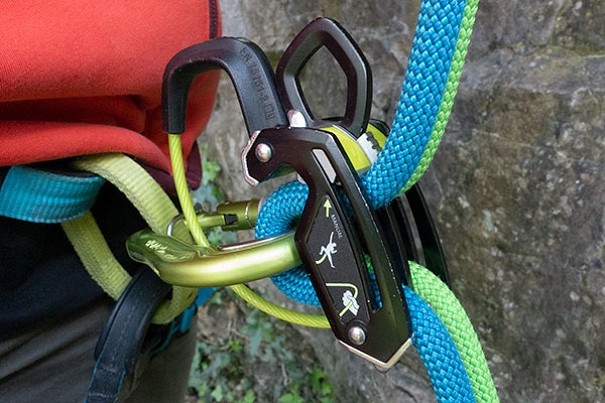
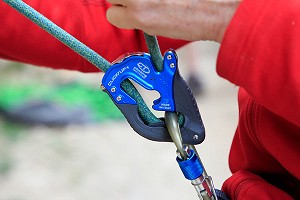
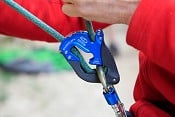
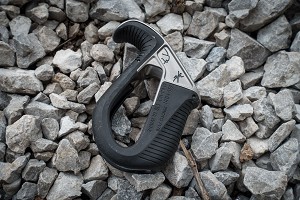
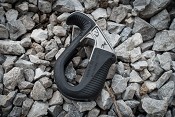
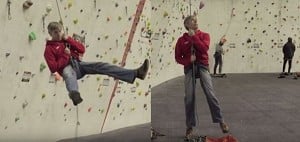

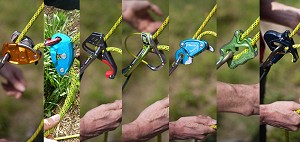

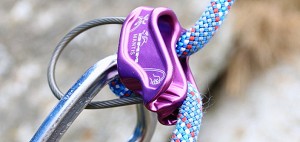

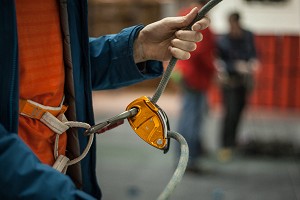
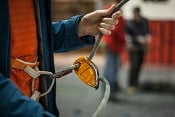
Comments